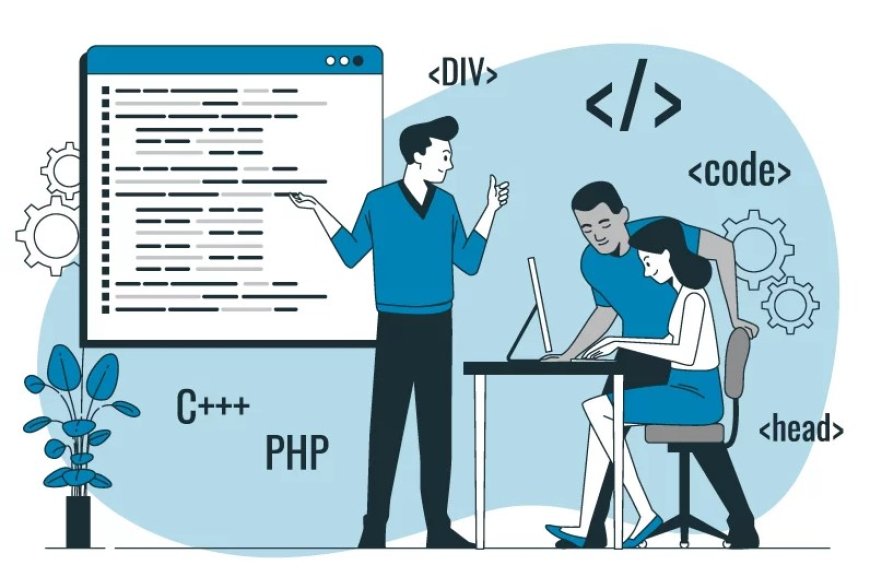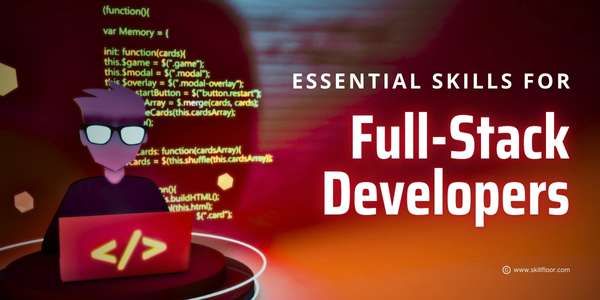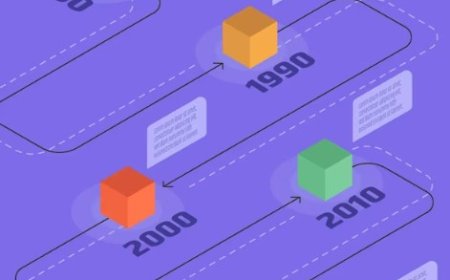Trends & Emerging Tech in Java Full Stack Development
Explore the latest trends and emerging technologies in Java Full Stack Development. Stay up-to-date with the advancements shaping the field.

In the world of software development, Java Full Stack Development refers to the practice of using the Java programming language to build both the front-end and back-end components of web applications. This comprehensive approach allows developers to create fully functional, end-to-end solutions. Staying updated with the latest trends in Java Full Stack Development is of paramount importance. It ensures that developers remain competitive and capable of leveraging emerging technologies, ultimately leading to more efficient, secure, and innovative web applications that meet evolving user expectations.
Front-End Development Trends
Front-End Development is continuously evolving, driven by the need for engaging user experiences. Responsive web design remains a fundamental trend, ensuring websites adapt seamlessly to various devices. Progressive Web Apps (PWAs) are gaining momentum, offering offline access and app-like interactions. Single Page Applications (SPAs) built with JavaScript frameworks like React, Angular, and Vue enable faster, dynamic content loading. The rise of WebAssembly is empowering web applications with near-native performance. Staying abreast of these Front-End trends is crucial for developers to create user-centric and high-performing web interfaces.
Back-End Development Trends
Back-End Development Trends encompass critical advancements in server-side technologies.
Microservices architecture, a paradigm shift from monolithic structures, allows for modular and scalable applications. Serverless computing, on the other hand, revolutionizes resource allocation, enabling developers to focus on code without managing infrastructure.
GraphQL, a query language for APIs, optimizes data fetching, enhancing efficiency. Java frameworks like Spring Boot and Jakarta EE remain foundational, offering robust toolkits for building enterprise-level applications.
Containerization, facilitated by Docker and orchestrated by Kubernetes, streamlines deployment and scaling, ensuring consistency across various environments. These trends collectively empower developers to create agile, scalable, and high-performing back-end systems.
Database Trends
Databases are the backbone of any application, serving as repositories for structured and unstructured data. They are crucial for storing, managing, and retrieving information efficiently.
-
NoSQL Databases (MongoDB, Cassandra): NoSQL databases have gained popularity due to their flexibility and scalability. MongoDB and Cassandra, for instance, allow developers to work with unstructured data and handle high volumes of information. They are well-suited for applications requiring fast and flexible data storage.
-
Graph Databases (Neo4j): Graph databases like Neo4j excel in handling complex relationships within data. They are ideal for applications that rely on intricate connections, such as social networks, recommendation engines, and fraud detection systems.
-
Database as a Service (DBaaS): The shift towards cloud computing has led to the emergence of Database as a Service (DBaaS). This approach offers the convenience of outsourcing database management to cloud providers, reducing administrative overhead and providing scalability.
-
Data Privacy and Security: As data breaches become increasingly common, data privacy and security are paramount. Developers must implement robust security measures to protect sensitive information. Compliance with data protection regulations like GDPR and HIPAA is essential, and encryption, access controls, and auditing are critical components of database security.
In the evolving landscape of Java Full Stack Development, staying updated with these database trends is essential for building robust and secure applications that can adapt to the changing needs of businesses and users alike.
DevOps and CI/CD
DevOps is a software development methodology that bridges the gap between development and operations teams. It focuses on collaboration, automation, and continuous improvement throughout the software development lifecycle. By fostering a culture of shared responsibility, DevOps aims to deliver high-quality software faster and more reliably.
CI involves frequently integrating code changes into a shared repository, automatically building and testing them. CD extends CI by automating the deployment of successfully tested code to production. Together, CI/CD pipelines enable rapid and consistent software delivery, reducing manual errors and speeding up time-to-market.
DevSecOps integrates security practices into the DevOps process. It emphasizes proactive security measures, automated security testing, and continuous monitoring. This approach ensures that security is not an afterthought but an integral part of the development process, enhancing the protection of applications and data.
IaC is a practice that allows infrastructure to be provisioned and managed through code and automation tools. With IaC, infrastructure becomes version-controlled, reproducible, and scalable. This approach streamlines infrastructure management, reduces manual configuration errors, and enables rapid environment provisioning to support CI/CD pipelines.
Cloud Computing
Cloud computing is a paradigm that has transformed the IT landscape. It involves the delivery of computing services over the internet, providing scalable and on-demand resources such as servers, storage, databases, networking, and more. This technology has become foundational for modern software development, offering cost-efficiency, flexibility, and global accessibility.
Cloud Platforms (AWS, Azure, GCP):
Leading cloud providers like Amazon Web Services (AWS), Microsoft Azure, and Google Cloud Platform (GCP) offer comprehensive suites of cloud services. Developers can choose a cloud platform based on their specific needs and preferences, gaining access to a wide array of tools and resources for application development, deployment, and management.
Serverless Computing on the Cloud:
Serverless computing is a cloud-native approach that allows developers to focus solely on writing code without worrying about server management. Platforms like AWS Lambda, Azure Functions, and Google Cloud Functions enable the execution of functions or microservices in response to events, automatically scaling resources as needed, which leads to improved efficiency and cost savings.
Hybrid and Multi-Cloud Strategies:
In today's complex IT landscape, organizations often adopt hybrid and multi-cloud strategies. Hybrid cloud combines on-premises infrastructure with public and private clouds, offering flexibility and data sovereignty. Multi-cloud involves using multiple cloud providers to reduce vendor lock-in and leverage the strengths of different platforms. These strategies enhance reliability, redundancy, and agility while mitigating risks.
Cloud computing plays a pivotal role in Java Full Stack Development by providing the infrastructure and services necessary for building scalable and resilient applications. Developers must stay updated on cloud trends to harness the full potential of this technology.
Emerging Technologies
The Internet of Things (IoT) is revolutionizing industries with connected devices and sensors. Java's platform independence and extensive libraries make it an ideal choice for IoT development. Java ME (Micro Edition) and Java SE (Standard Edition) cater to IoT's diverse needs, enabling the creation of smart, interconnected devices that collect and process data. Understanding what is Java technology in depth will provide a strong foundation for developing and managing modern IoT ecosystems.
AI and ML are transforming applications with predictive analytics, natural language processing, computer vision and Low-code platforms. Java's robust ecosystem supports AI/ML through libraries like Deeplearning4j and Apache OpenNLP. Java's reliability and scalability make it suitable for building AI-driven solutions, from recommendation engines to autonomous systems.
AR and VR offer immersive experiences, from gaming to training simulations. Java, with tools like Unity3D and Java 3D, plays a role in developing AR/VR applications. Java's portability and performance benefits VR headset and AR glasses manufacturers, aiding in content creation and interaction.
Blockchain's decentralized ledger technology promises secure and transparent transactions. Java's cryptography libraries and cross-platform capabilities make it an excellent choice for blockchain development. Java's wide adoption can help streamline blockchain applications across various industries, including finance, supply chain, and healthcare, by ensuring code consistency and reliability.
Best Practices and Challenges
In the ever-evolving landscape of Java Full Stack Development, adhering to best practices is crucial for ensuring the success of projects. This involves maintaining coding standards, implementing design patterns, and following industry conventions. It also includes rigorous testing, documentation, and version control to ensure code quality and maintainability.
Challenges in this field are equally important to address. Scalability remains a significant concern, particularly as applications grow in complexity and user base. Achieving optimal performance while handling high loads requires careful architecture and resource management. Security challenges, including data breaches and vulnerabilities, demand constant vigilance and proactive measures to safeguard applications and user data.
Talent acquisition and upskilling are additional challenges. Finding skilled developers well-versed in emerging technologies can be competitive. Hence, organizations must invest in training and upskilling their teams to stay current with the latest trends and technologies. Adapting to these challenges and implementing best practices is essential for Java Full Stack Developers to thrive in today's dynamic development landscape.
Java Full Stack Development is continuously evolving with several key trends and emerging technologies. From front-end innovations like Progressive Web Apps to back-end advancements in microservices and DevOps practices, staying updated is crucial. Emphasizing the importance of adaptability is essential as the tech landscape evolves rapidly. Continuous learning and exploration of new tools and methodologies are not only encouraged but necessary to thrive in this dynamic field. As Java developers, embracing these trends and remaining open to change will ensure success in the ever-evolving world of full stack development.




























































